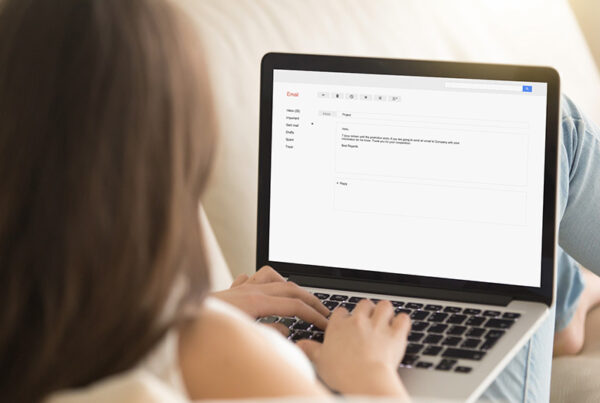One aspect of the recurring billing process that is frequently overlooked is the actual design of the invoice document. Most customers focus on the few key fields on the invoice, such as the amount owed and the due date. However, a lot of other valuable information can be presented on an invoice.
There is a science to recurring revenue invoice design. A well-designed template helps accelerate customer collections and reduce inquiries to the accounts receivable team. However, success requires mastering the critical balance in the amount of information to present on a bill. You want to present people with enough information that they can answer the most frequently asked questions. However, you don’t want to provide too much information and risk that customers will begin to raise more questions.
Implementing a new recurring billing system is one of the best times to rethink the design of your invoice. The simplest option is not to make any changes. You can migrate to a new billing system with a clone of your invoice template. Customers will never know that anything changed. However, when talking to finance departments, we find that there are almost always opportunities to improve invoice design.
1)Answer the Most Frequently Asked Questions
The best place to start is when considering a recurring revenue invoice design is what are the most frequently asked questions you have received historically. Take a look through the emails received in your billing@yourcompany.com inbox and categorize the top 10 questions. Then consider ways to reduce the number of billing inquiries by answering those questions on the invoice itself. Some of the most common details include tax reporting information (e.g. W9 forms), payment instructions (e.g. bank routing numbers, SWIFT Code, IBAN, BIC), and the customer’s purchase order number.
2) Use Different Invoice Templates for Different Customer Segments
Many companies segment their customers into different groups. For example, there might be an enterprise account group and a self-service/SMB group. For the enterprise accounts, which are invoiced and remitted later, there may be a more detailed set of information required to present, such as PO number and payment instructions. The self-service accounts might be set up for automated recurring payments to the card on file and, therefore, require less detail on the invoice. Some companies not only vary the level of detail on invoices but also use different branding for different segments.
3) Hide Discount Columns for Customers Paying List Price
Most recurring revenue businesses will offer discounts to customers who commit to annual contracts and/or purchase higher volumes of services. However, not every customer gets a discount. Accounts with month-to-month billing or low volume may pay the list price on the website. If you are not giving a customer a discount, it is best not to display a discount column on the invoice. Customers typically will see a 0% discount on the bill and ask, “Why am I not getting a discount?” These consume valuable time from the accounts receivable team, who is often on the receiving end of these inquiries. These might be good inquiries to route to the sales team for upsell opportunities.
Modern invoice templates can be dynamically altered based on programmable logic. The logic might be that if there is no discount, do not display the discount column. If there is a discount, then do not display the discount column. With dynamic invoice templates, you can show or hide various fields. Discounts are just one example.
Subscribe to our Newsletter
Delivered once per month. Get the latest on SaaS metrics, revenue recognition, pricing strategies.
3) Hide Discount Columns for Customers Paying List Price
Most recurring revenue businesses will offer discounts to customers who commit to annual contracts and/or purchase higher volumes of services. However, not every customer gets a discount. Accounts with month-to-month billing or low volume may pay the list price on the website. If you are not giving a customer a discount, it is best not to display a discount column on the invoice. Customers typically will see a 0% discount on the bill and ask, “Why am I not getting a discount?” These consume valuable time from the accounts receivable team, who is often on the receiving end of these inquiries. These might be good inquiries to route to the sales team for upsell opportunities.
Modern invoice templates can be dynamically altered based on programmable logic. The logic might be that if there is no discount, do not display the discount column. If there is a discount, then do not display the discount column. With dynamic invoice templates, you can show or hide various fields. Discounts are just one example.
4) Show or Hide the Line Items Bundling of Products
A popular strategy to increase the “share of wallet” with accounts is to bundle multiple products into a single SKU with a single discounted price point. Companies may want to present all four-line items on the invoices in certain situations. For example, if the monthly price point is high, the customer may need to be reminded of the value being received. However, in other situations, recurring revenue businesses might want to make the invoice presentation simpler to reduce the questions. The customer might only want to display the bundle as a single line item to reduce inquiries such as “What are these other three or four things?”
5) Enable Customers to Pay Now with an Embedded Link
Most recurring revenue businesses try to perform most of their collections through automated payments. However, not every customer will participate in an auto-pay program. Some prefer to be invoiced and remit payment on the due date through their preferred channel. One strategy to accelerate payments from these “invoiced” accounts is to reduce the friction with remittance, enabling customers to pay easily on demand. A best practice is to put a PayNow option on the invoice itself. Modern invoices can include HTML links or a button that takes the customer directly to a hosted payment page. The customer can easily remit payment online by entering a credit card or bank account details for a one-time ACH debit.
Learn More about Recurring Revenue Invoice Design
Interview with Max Rosenberg – VP of Client Services
In this excerpt from our podcast, Max Rosenberg, Vice President of Client Services for Ordway, discusses the considerations that recurring revenue businesses should consider when redesigning invoice templates and some of the modern technologies available to dynamically format the bills.




